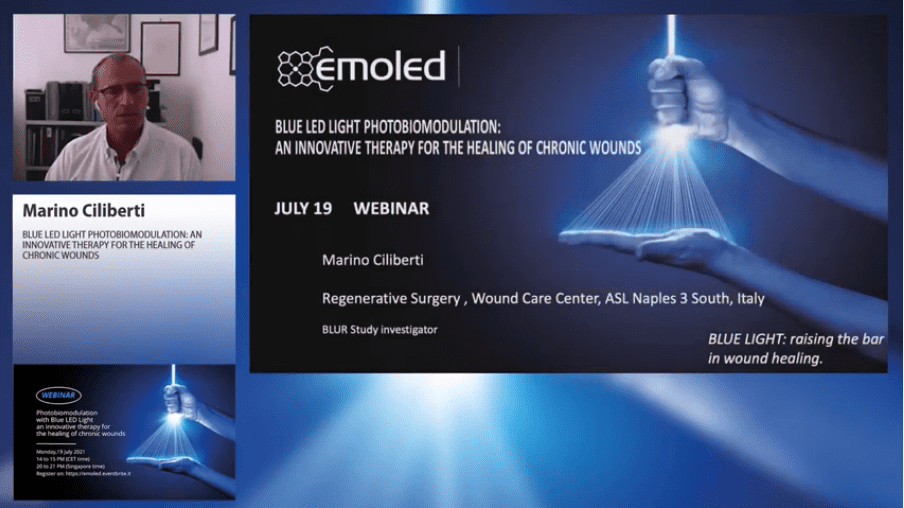
Blue Light for Ulcers Reduction (B.L.U.R.) Study
Effectiveness of Blue Light Photobiomodulation therapy in the treatment of chronic wounds.
Authors: Fraccalvieri M, Amadeo G, Bortolotti P, Ciliberti M, Garrubba A, Mosti G, Bianco S, Mangia A, Massa M, Hartwig V, Salvo P, Ricci EB
Year: 2021
Title: Effectiveness of Blue light photobiomodulation therapy in the treatment of chronic wounds. Results of the Blue Light for Ulcer Reduction (B.L.U.R.) Study.
Publication: Ital J Dermatol Venerol. 2021 Sep 9. doi: https://doi.org/10.23736/S2784-8671.21.07067-5
AIM
The aim of the study was to determine if Blue light Photobiomodulation with EmoLED medical device in addition to standard of care is more effective compared to standard of care alone in promoting re-epithelialization of chronic wounds of lower limbs in 10 weeks.
METHODS
- Multicenter, prospective, controlled study carried in seven specialized outpatient centers located across Italy.
- Patients with chronic wounds of the lower limb of venous, arterial, or mixed origin and non-healing surgical dehiscence were enrolled.
- To minimize all variabilities, each patient has been used as control of himself: on each patient one wound or part of it was treated with EmoLED in addition to SoC (Treated Arm) and one wound or part of it that was treated with SoC alone (Control Arm).
- The wounds in the treated arm, in addition to the SoC were irradiated with EmoLED for 60 seconds (120 mW/cm2) at each weekly visit.
- Primary endpoint was the comparison of the re-epithelialization rate expressed as a percentage of the difference between the initial and final area.
- Secondary endpoints were treatment safety, pain reduction, wound area reduction trend over time, healing rate.
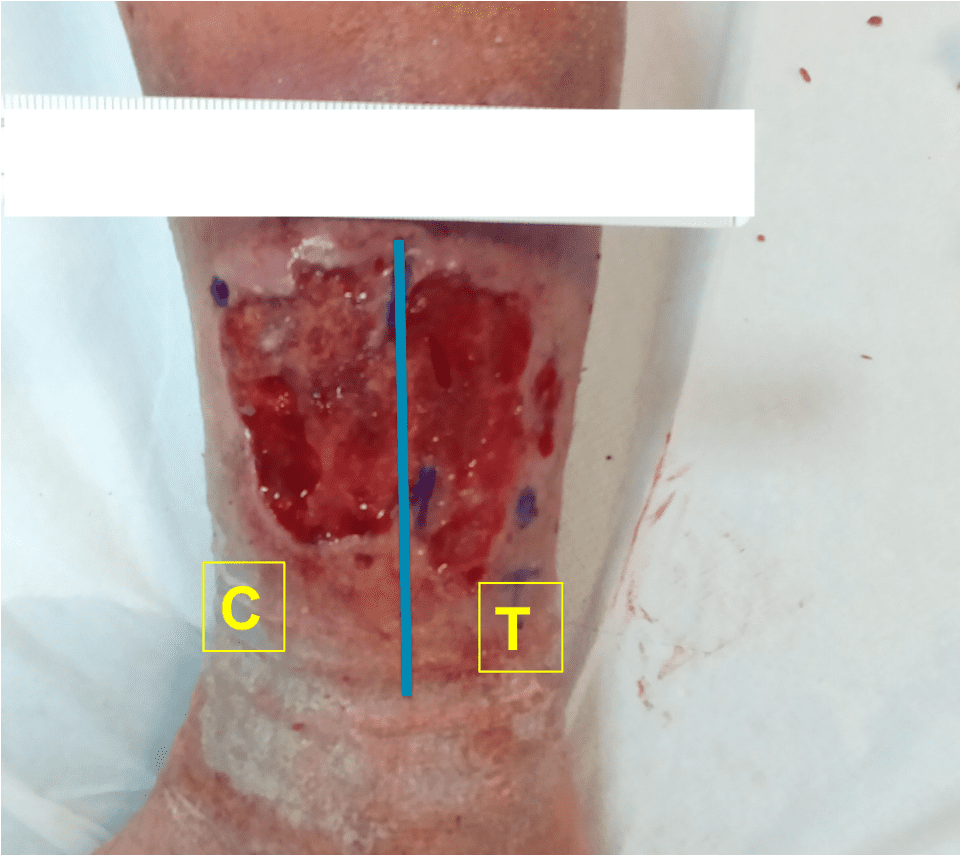
RESULTS
- Ninety patients affected by multiple or large area ulcers were enrolled (119 wounds) and 84 completed the study (6 drop out for unrelated reasons).
- The most frequent etiology was venous leg ulcers (63,02%) and 50 out of 119 wounds had been present for more than 24 months, with an average age of 67,8 months.
- The most frequent comorbidities were arterial hypertension (41,1%), type 1 or 2 diabetes mellitus (20,0%) and obesity (8,8%).
- At week 10, the wounds treated with EmoLED in addition to standard care showed a smaller residual wound area compared to the wounds treated with standard of care alone: 42.1% 63.4% (P=0.029). The difference is particularly evident in venous leg ulcers, 33.3% vs. 60.1% (P=0.007).
- Treated wounds that reached full re-epithelialization are 41,7% more than control (17 treated wounds and 12 control).
- The Adverse Events (AEs) observed during the study were unrelated to the treatments and were an expression of the underlying pathologies.
- Patients showed a significant reduction in pain (P=2×10-7) that was manifest at week 4 of treatment and correlated to the clinical evidence, reported by investigators, of the resolution of the inflammatory state.
- The treated group appeared to have a higher probability of healing at the 10th week (0.238 vs 0.176; p=0.16).
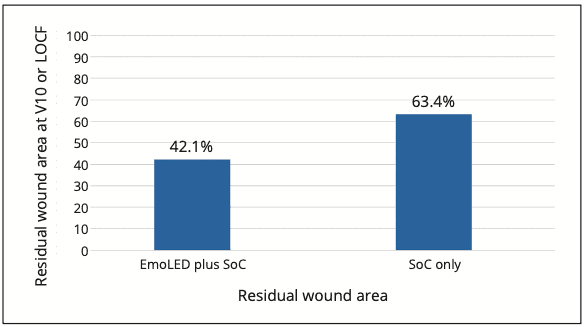
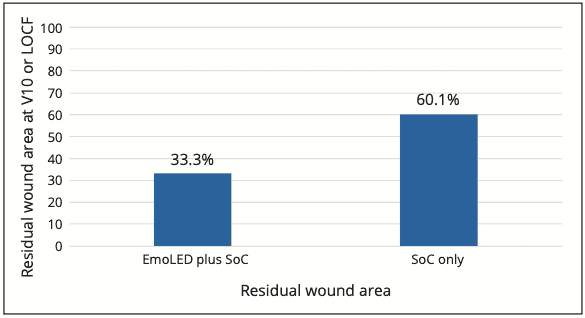
CONCLUSIONS
Treatment with EmoLED in addition to the SoC for 60 seconds once a week induced a substantial reduction on the area of the wound than the SoC alone. The wounds treated were indeed chronic and challenging as demonstrated by the median life (20,5 months).
The BLUR study shows that treatment with EmoLED enhances the re-epithelialization of chronic wounds with a statistically significant difference compared to the therapy with SoC alone and this result is particularly evident in venous leg ulcers. Action on pain and the whole inflammation phase was evident from what patients reported and the clinical observation indicates.
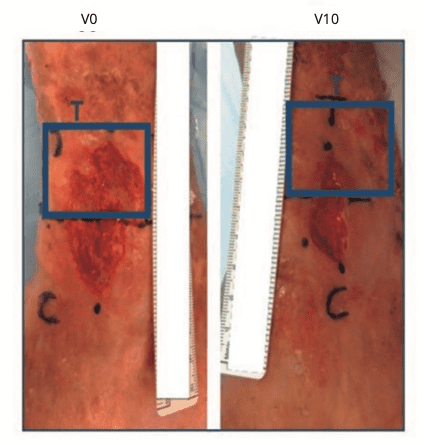
Dr Marino Ciliberti, BLUR Study Investigator, presented the results of the clinical trial during the Emoled Webinar “Photobiomodulation with Blue LED Light: an innovative therapy for the healing of chronic wounds, 19 July 2021.
Listen to the presentation: https://youtu.be/J2AqCTsQhMM
